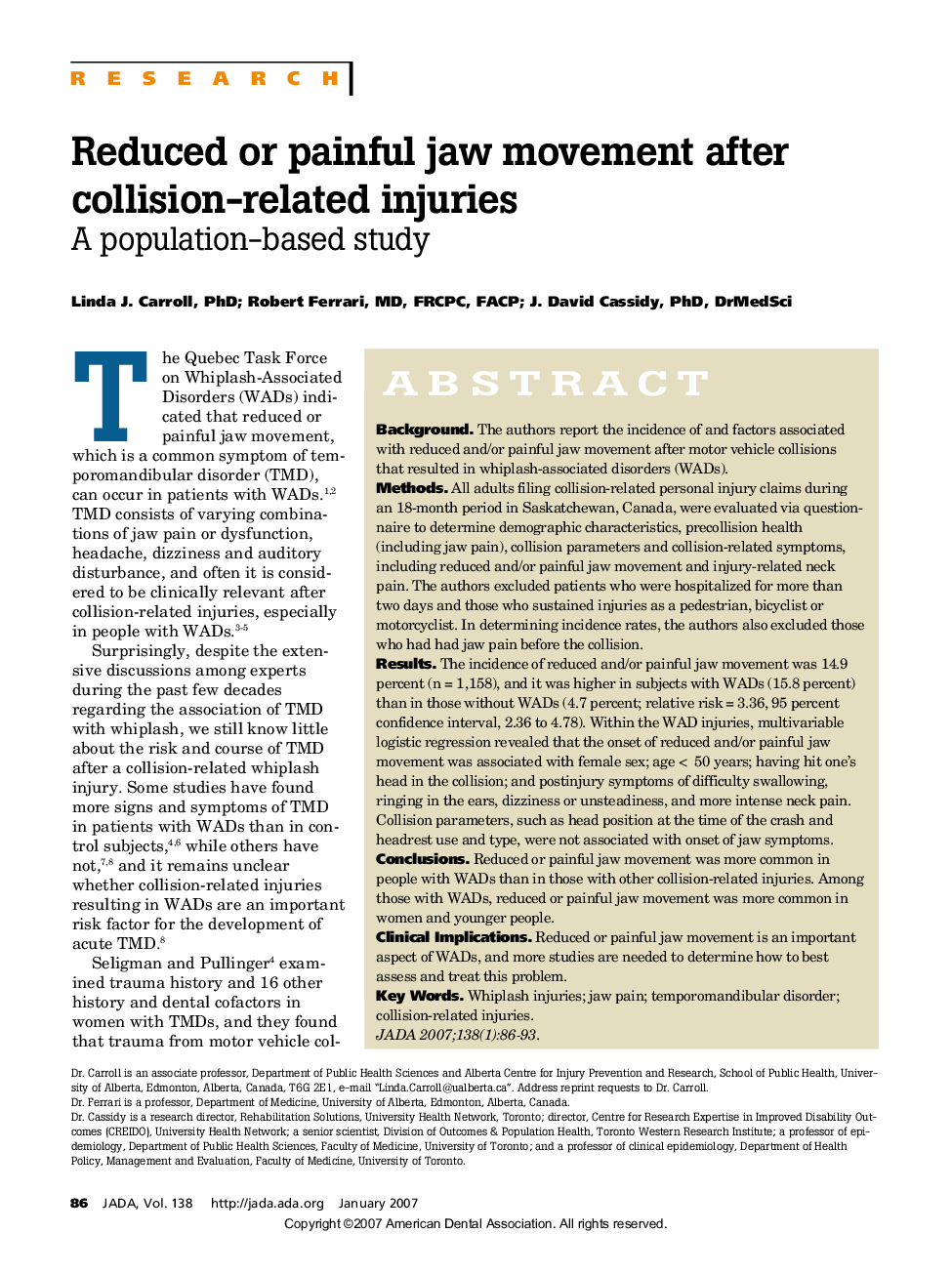| Article ID | Journal | Published Year | Pages | File Type |
|---|---|---|---|---|
| 3140577 | The Journal of the American Dental Association | 2007 | 8 Pages |
ABSTRACTBackgroundThe authors report the incidence of and factors associated with reduced and/or painful jaw movement after motor vehicle collisions that resulted in whiplash-associated disorders (WADs).MethodsAll adults filing collision-related personal injury claims during an 18-month period in Saskatchewan, Canada, were evaluated via questionnaire to determine demographic characteristics, precollision health (including jaw pain), collision parameters and collision-related symptoms, including reduced and/or painful jaw movement and injury-related neck pain. The authors excluded patients who were hospitalized for more than two days and those who sustained injuries as a pedestrian, bicyclist or motorcyclist. In determining incidence rates, the authors also excluded those who had had jaw pain before the collision.ResultsThe incidence of reduced and/or painful jaw movement was 14.9 percent (n = 1,158), and it was higher in subjects with WADs (15.8 percent) than in those without WADs (4.7 percent; relative risk = 3.36, 95 percent confidence interval, 2.36 to 4.78). Within the WAD injuries, multivariable logistic regression revealed that the onset of reduced and/or painful jaw movement was associated with female sex; age < 50 years; having hit one's head in the collision; and postinjury symptoms of difficulty swallowing, ringing in the ears, dizziness or unsteadiness, and more intense neck pain. Collision parameters, such as head position at the time of the crash and headrest use and type, were not associated with onset of jaw symptoms.ConclusionsReduced or painful jaw movement was more common in people with WADs than in those with other collision-related injuries. Among those with WADs, reduced or painful jaw movement was more common in women and younger people.Clinical ImplicationsReduced or painful jaw movement is an important aspect of WADs, and more studies are needed to determine how to best assess and treat this problem.
